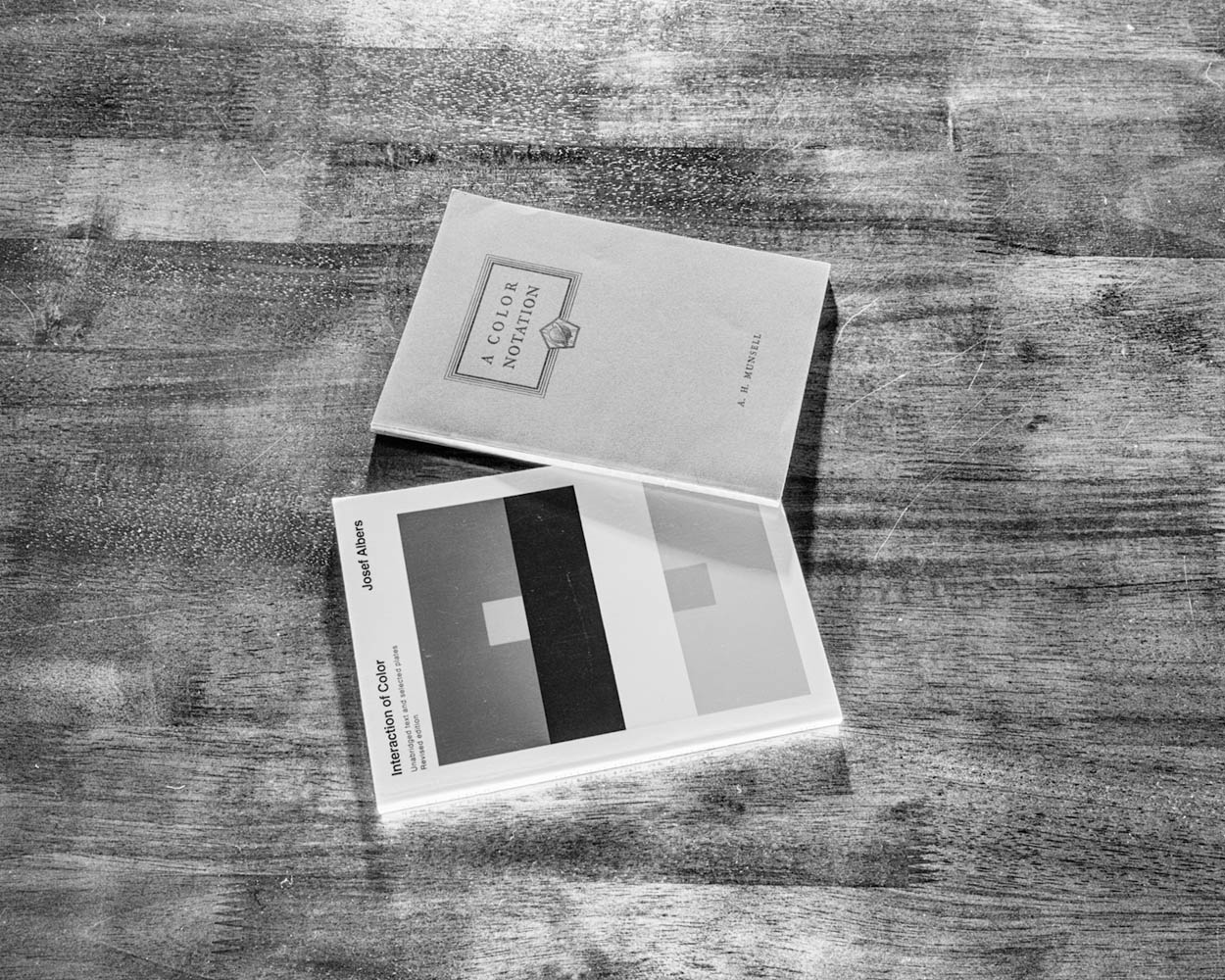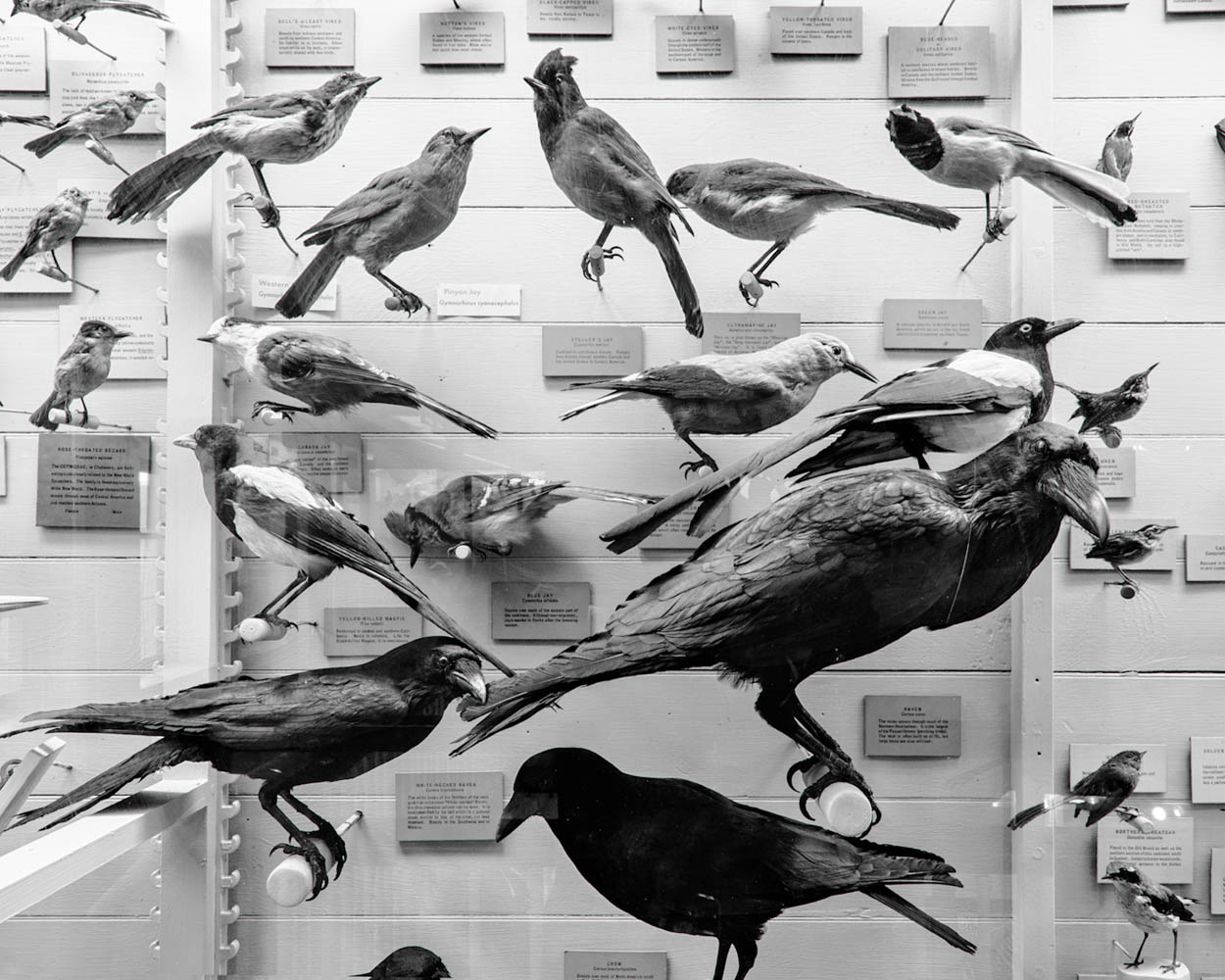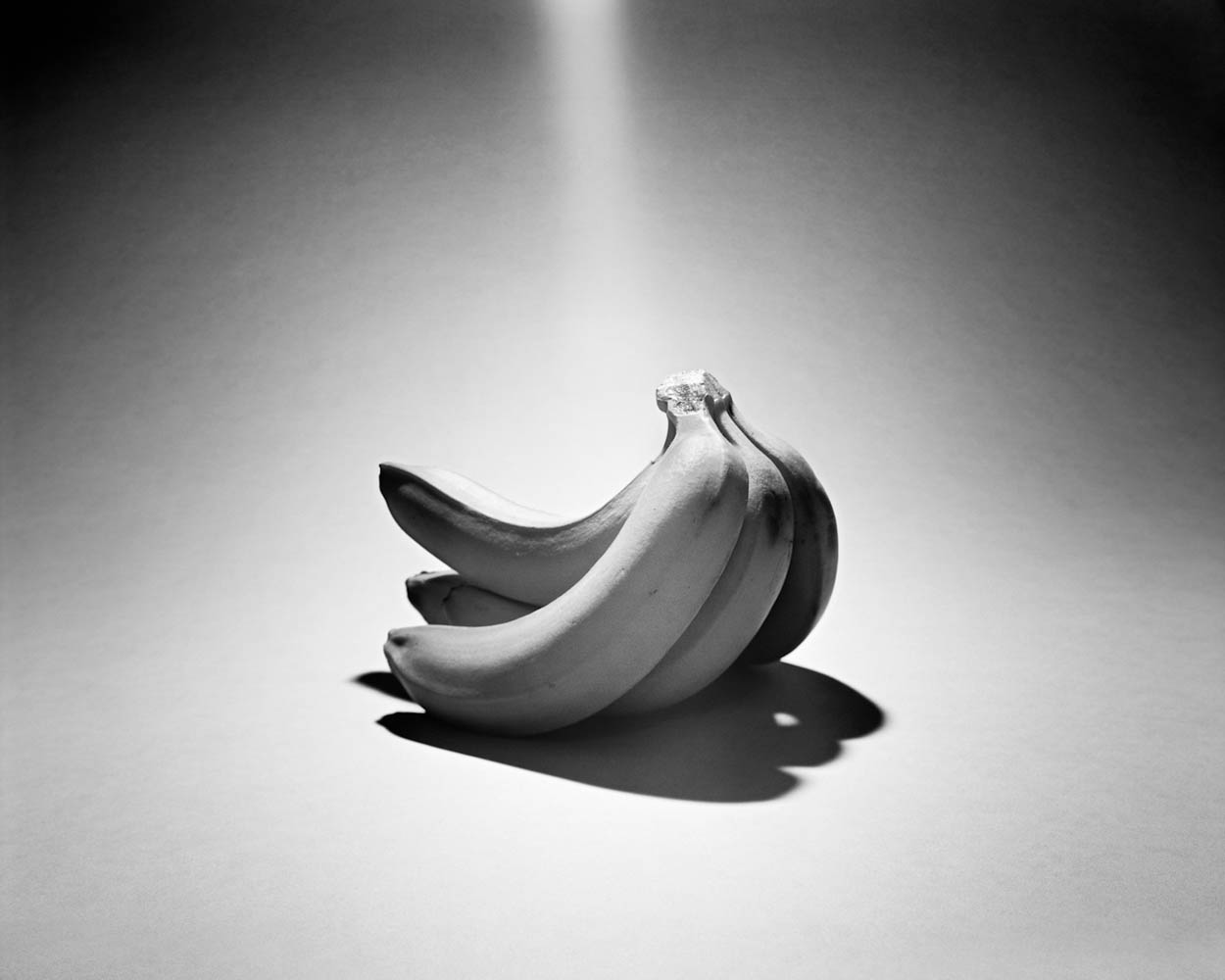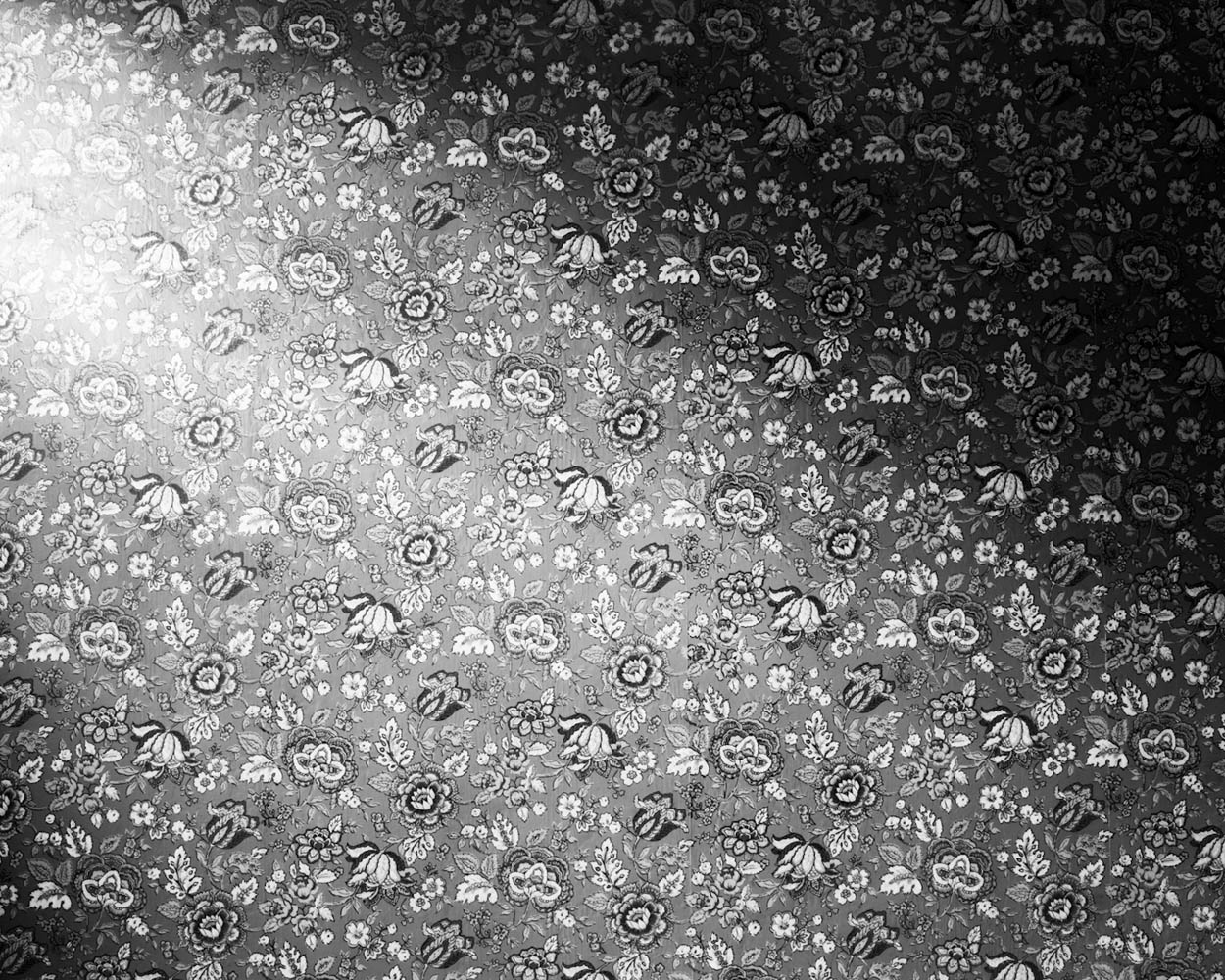
A bunch of green bananas, a solitary flourescent bulb and the pie-shaped pieces of a Trivial Pursuit Game. These are the subjects of photographer Matthew Gamber’s latest collection of still lifes, titled “Any Color You Like.” The objects Gamber photographed were chosen for their distinct and recognizable colors—a decision that appears to be in conflict with the presentation of the series as stark black-and-white prints.
The decision to print in black and white was meant, Gamber said, to challenge how people understand what they see. “By using these different processes, and to try to look at certain subjects, it’s just to call attention to things that we take for granted in terms of seeing.”
The inspiration for the project came while Gamber was teaching at the Savannah College of Art and Design. He discovered that a student in his color photography class was colorblind. “He didn’t look at color as color—he looked at it as value,” Gamber said. “He looked at it as a lack of contrast or a lack of clarity.”
The realization that his student was manipulating color, while only being able to see in tones of gray, led Gamber to create photographs that mimicked this experience. He began by shooting objects from pop-culture that were easily recognizable: a pair of 3D glasses and a Lite-Brite toy, for instance. He wanted to play with ideas of perception by removing the most recognizable feature from his subjects, their color.
“I wanted it to be something that felt just out of reach,” he says. “I think the success of this relies on what the viewers expectations are.”
As the project progressed, Gamber moved on to more subtle imagery. A shot of ornately patterned wallpaper in a Boston brownstone references Bauhaus-era color theory that influenced the industrial production of wallpaper in the 1930s, Gamber explained. An image of a display of North American birds took on more meaning when Gamber learned that the birds’ feathers do not have their own color, but rather, are able to reflect certain light spectrums.
In addition to thinking about color, Gamber wanted his photographs to play with ideas of timelessness. “I wanted to shoot in a way that it looks like it could have been shot yesterday, but it also looks like it was shot in the 1940s or the 1950s,” said Gamber. “There is something about how when you photograph something in black and white, it gets locked in that timeframe where it just becomes obsolete as an everyday seeing experience.”
Gamber spent two years on “Any Color You Like,” which recently won The Curator award from Photo District News and will be featured in Brooklyn’s Photoville show this month. All of the photographs were shot on color film or as color digital captures. The negatives and color files were then converted to black and white negatives and printed as traditional silver gelatin black-and-white prints in a darkroom.
Working on this project has influenced the way Gamber thinks about color in both his photography and his life. He has started bringing color blindness tests into the classes he teaches at various colleges in Boston. He has also, Gamber said with a chuckle, become a more color-coordinated dresser.
“I can see that much more now,” said Gamber “I’m more aware of how we are more emotionally charged by certain colors.”
Matthew Gamber is a Boston-based photographer. His photos will be featured in Brooklyn’s Photoville festival from June 22-July 1.














More Must-Reads from TIME
- Why Trump’s Message Worked on Latino Men
- What Trump’s Win Could Mean for Housing
- The 100 Must-Read Books of 2024
- Sleep Doctors Share the 1 Tip That’s Changed Their Lives
- Column: Let’s Bring Back Romance
- What It’s Like to Have Long COVID As a Kid
- FX’s Say Nothing Is the Must-Watch Political Thriller of 2024
- Merle Bombardieri Is Helping People Make the Baby Decision
Contact us at letters@time.com